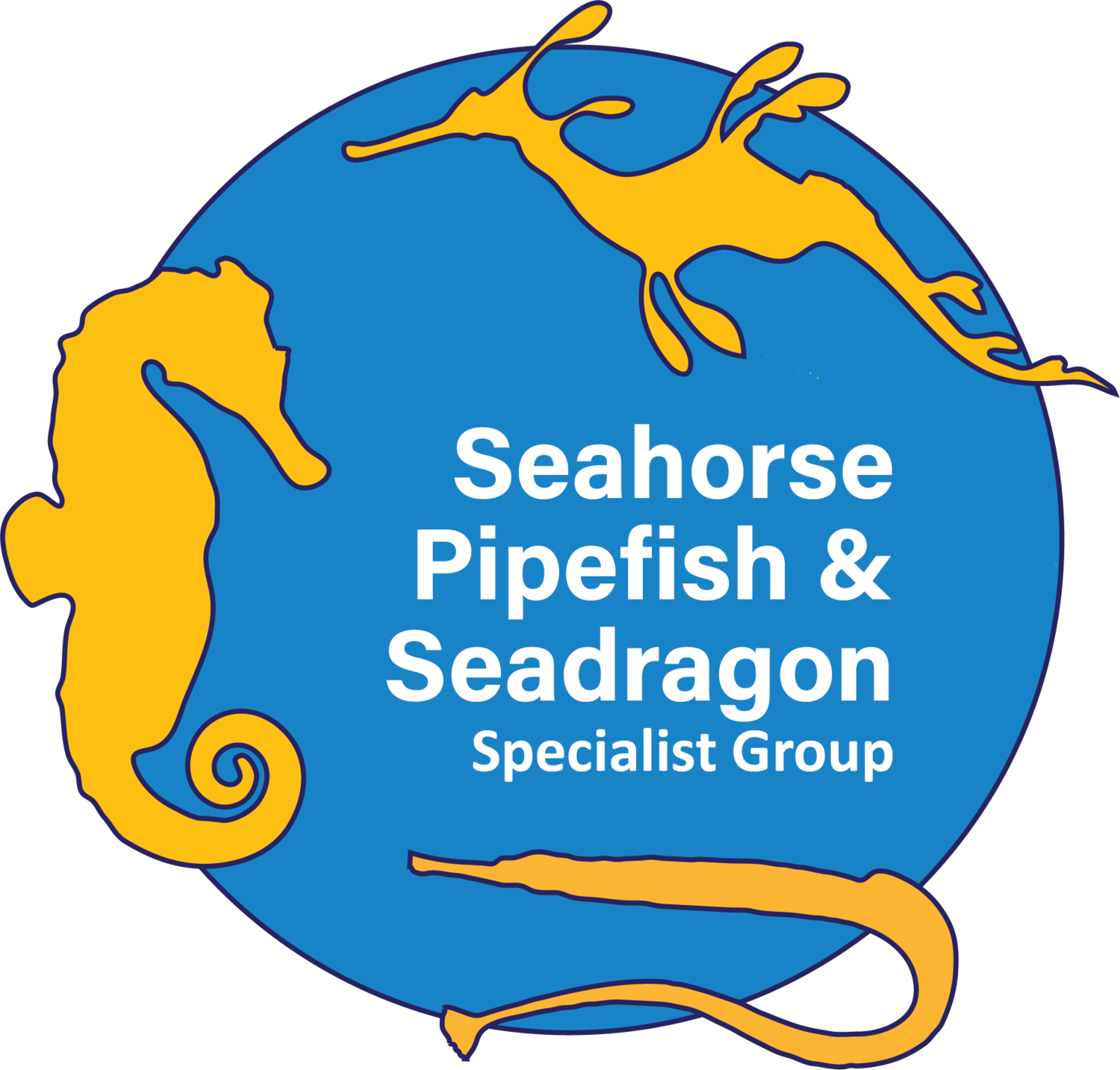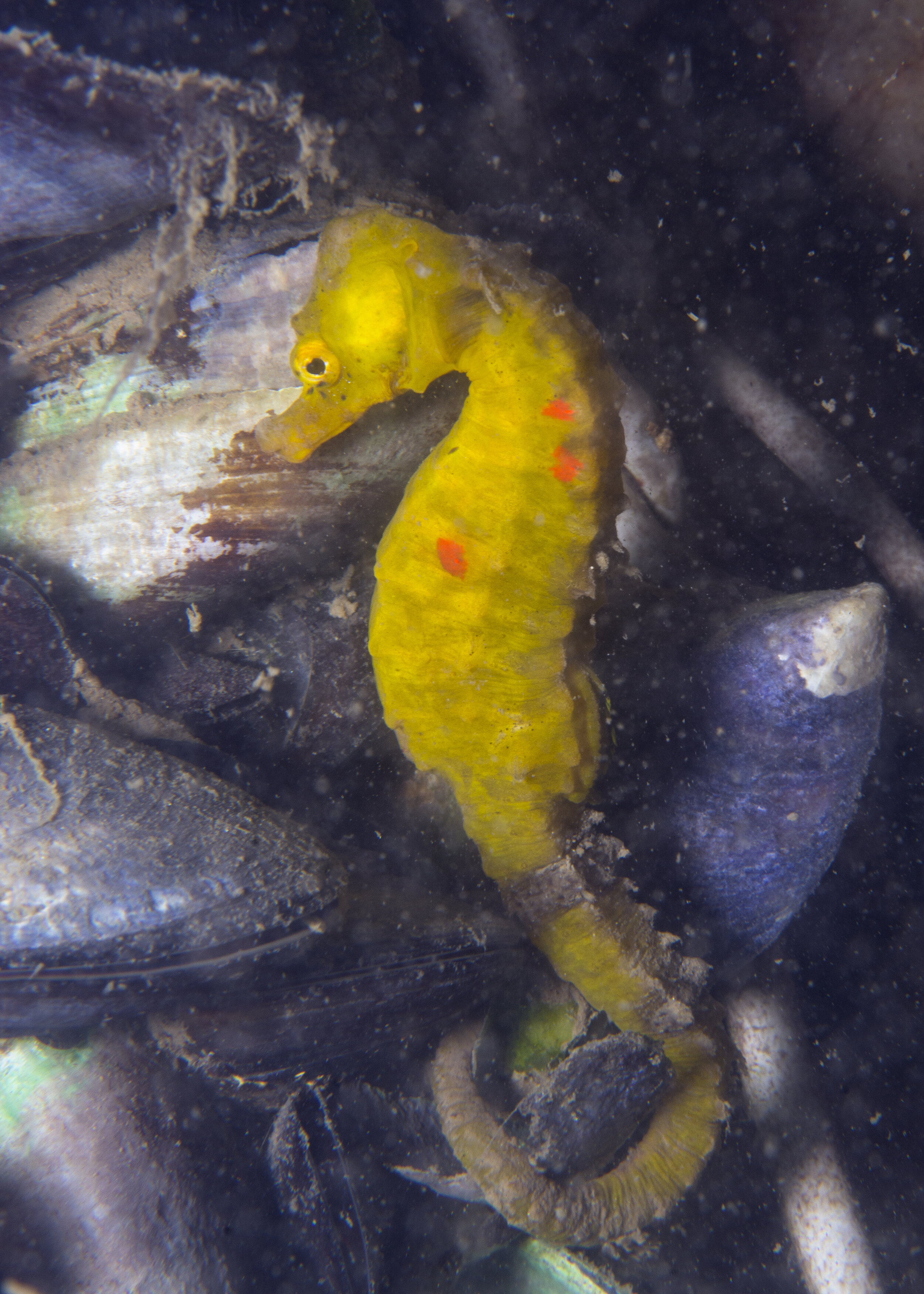By Dr. Louw Claassens, Regional Focal Point for Africa for IUCN SSC Seahorse, Pipefish and Seadragon Specialist Group
The Knysna seahorse (Hippocampus capensis). Photo by Louw Claassens
The Knysna seahorse is the most threatened seahorse in the world. It was the first seahorse to be listed as Endangered on the IUCN Red List in 2004. It is no surprise that this seahorse is so threatened, seeing that it is only found in 3 estuaries along the south coast of South Africa. Even though there have been various studies on the Knysna seahorse in the past, we don’t know much about its life history – how fast does it grow, how far does it move, how many are there?
Map of Knysna, Cape Province, South Africa
Getting answers to these questions can be quite tricky, especially for animals that are small, rare and cryptic like seahorses - not to mention that they are underwater! One way to get answers is to tag the seahorses. Now, you might ask, how on earth do we tag a seahorse? In the past, we used small, numbered necklaces. While this did the trick for studying seahorses in aquariums, it was not ideal for seahorses in the wild as tags became fouled or snagged. Now we tag seahorses using Visible Implant Fluorescent Elastomer (VIFE). VIFE tags are teeny-tiny elastomer tags that are injected under the skin of a seahorse. These tags have no adverse effects on the seahorse, they last a long time and allow us to identify individual seahorses by using different colour combinations. Now we can tag and monitor seahorses for extended periods, collecting much information on their growth, movement and population size. The entire tagging process can be done underwater and takes about a minute to complete. (Watch a tagging video by Jason Boswell, on Dropbox )
Reno mattress habitat found in Thesen Islands Marina. Photo by Louw Claassens
Knysna seahorse holding onto the Reno mattress wire. Photo by Louw Claassens
I teamed up with Dr Dave Harasti to gather the missing life history information of the Knysna seahorse. Dave is the world’s expert on another Endangered seahorse, the White’s Seahorse Hippocampus whitei, and has extensive experience in seahorse tagging research. We initiated a VIFE tagging project in the Knysna estuary in 2018 focusing on a Knysna seahorse population living on artificial Reno mattress habitat within a local marina. Our research was limited in extent because of the Endangered status of this seahorse and various research permit restrictions. Regardless of these limitations, we were confident that our study would reveal important life-history information about the Kynsna seahorse.
Tagged Knysna seahorse. Photo by David Harasti
Dave visited us in January 2018 and trained us to tag seahorses. We then went on to tag 78 seahorses in February 2018 and monitored them every month, until March 2019. We counted them, mapped their movement, and recorded their growth.
We found 134 seahorses in February 2018 living within this artificial habitat but only 72 animals in March 2019. We are not sure why there was a decrease, but it could be related to localized disturbances (such as the noise from ongoing maintenance common in a marina), or a natural pattern of increasing and decreasing seahorse populations. We also found that the Knysna seahorse grows rapidly, like other seahorse species, and that it lives in the same spot month after month. Seahorses within the area only moved an average of 5 m during our entire study period, so if it finds a home that it likes, it will stick around.
Our findings provide important insights into the life history of the Knysna seahorse which we will use to inform its successful conservation. For example, we could better protect the areas where these seahorses are found in high densities, as they remain in the same area for extended periods. Also, maintenance activities within the marina should be better regulated to prevent adverse impacts on the resident seahorse populations. Humans and seahorses share the coastal environment and for us to be better neighbors, we sometimes need to change how we use our environment to ensure that all coastal inhabitants can thrive.
Find out more in our publication:
Claassens, L., & Harasti, D. (2020). Life history and population dynamics of an endangered seahorse (Hippocampus capensis) within an artificial habitat. Journal of Fish Biology, 97(4), 974-986.
https://onlinelibrary.wiley.com/doi/full/10.1111/jfb.14452





